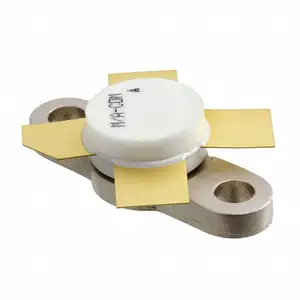(1069 products available)

































































































































































The microwave transmitter receiver system is an essential communication tool that transmits microwave signals for air traffic control, mobile telecommunications, and even security applications. This system includes a transmitter that generates and modulates signals on a carrier wave and a receiver that demodulates the signal for information extraction. Both components are linked via microwave antennas. The various kinds of antennas include the parabolic dish, horn, and dielectric resonator microwave antennas.
Microwave receivers come in various types, including analog and digital receivers. Analog receivers provide a continuous output signal for further processing, while digital receivers convert electromagnetic waves into a sequence of 1's and 0's. The digital option is more efficient and has better performance than its analog counterpart.
The superheterodyne receiver is one of the popular microwave receiver types. It utilizes frequency conversion to improve the receiver's selectivity and sensitivity. There are two main stages in the process, and they operate at lower frequencies where components are easily and less expensively available. A second common type, the homodyne receiver, uses a fixed-reference frequency to down-convert the received RF signal into baseband. It is a simpler system than the former and offers a reduced wideband RF input.
Overall, variations in microwave transmitter receiver systems arise from differences in application needs. The need for security feeds between fixed points in a geographical area calls for a system that can minimize signal interference due to obstacles. In contrast, simultaneously feeding large data in a crowded environment uses a system with a high data-handling capacity.
MIMO (Multiple Input Multiple Output) Antennas:
Microwave antennas with MIMO capabilities are designed to enhance communication systems. By utilizing multiple transmission and reception antennas simultaneously, they improve data throughput, extend range, and increase system robustness. MIMO antenna technology leverages the multipath propagation of radio waves to exploit the spatial domain, allowing a single frequency channel to be used simultaneously by separate data streams. As a result, MIMO antennas can provide higher capacity and reliability in both line-of-sight and non-line-of-sight conditions, making them a critical component for applications such as broadband wireless access, point-to-multipoint links, and other high-performance communication systems.
Waveguide Feeds:
Waveguide feeds for microwave antennas are crucial components used to efficiently couple microwave signals from a waveguide transmission line to an antenna. With their ability to handle high power levels and low losses at microwave frequencies, these feeds are ideal for applications such as satellite communication systems, radar antennas, and other high-power microwave systems. They also provide excellent directivity and a compact design, making them suitable for phased array antennas and other space-constrained applications.
Parabolic Reflector:
Parabolic reflectors catch and focus microwave radiation. They have smooth, curved surfaces. To get better signal strength and range, they point antennas straight with their centers. These dishes are good at collecting waves because they have very exact shapes. This lets them get lots of power from small sources. They work well for satellite and radar because such systems need high-directional focusing. The fine reflection and accuracy of the parabolic shape make it great for tightly-guided high frequency like microwaves.
RF Waveguides:
An RF waveguide is a hollow metal tube or dielectric structure used to guide radio frequency (RF) signals, including microwaves. It works by containing electromagnetic waves within its structure and forcing them to travel in a certain way. The waves bounce off the waveguide walls in a controlled manner. Waveguides have the benefit of low loss transmission for high power signals compared to coaxial cables. They also reduce interference. This makes guides useful for radar, satellite, and other RF applications.
Feed Horn:
A feed horn is an important part of a microwave antenna. It is a cone or horn-shaped device that helps collect and direct radio waves. Feed horns work by funneling signals into the antenna from space. They match up wavefronts so signals go in efficiently. This ensures as much signal as possible feeds into the next part of the antenna. Good performance from a feed horn means the antenna can receive or broadcast waves effectively. It increases overall communication quality. Feed horns are key for maximizing signal transfer in microwave systems.
Applications of a microwave transmitter receiver span multiple industries and functions because they are essential for applications that need wireless communication over medium to long ranges while maintaining high near-line-speed data transfer rates. Known applications include;
There are several factors to consider before choosing a long-range microwave transmitter receiver. They include;
Q1: What is the maximum distance a microwave transmitter receiver can reach?
A1: Factors like power output, antenna design, frequency, and line-of-sight affect range. Some can go 1 to 10 miles. High-powered ones with good antennas in open areas can exceed 100 miles.
Q2: Can a microwave transmitter receiver go through walls or buildings?
A2: No. Microwaves need a clear line-of-sight between antennas. Walls, trees, buildings, and other obstacles block the signal. So, transmitter receivers work best for outdoor connections.
Q3: How to set up a microwave transmitter receiver?
A3: To install, mount the antennas on poles or tower. Then connect the transmitter and receiver to power sources. Finally, align the antennas for the best signal.
Q4: Why choose microwave over other transmitters?
A4: Benefits include high data rates, a reliable connection over long distances, resistance to interference, and low costs.